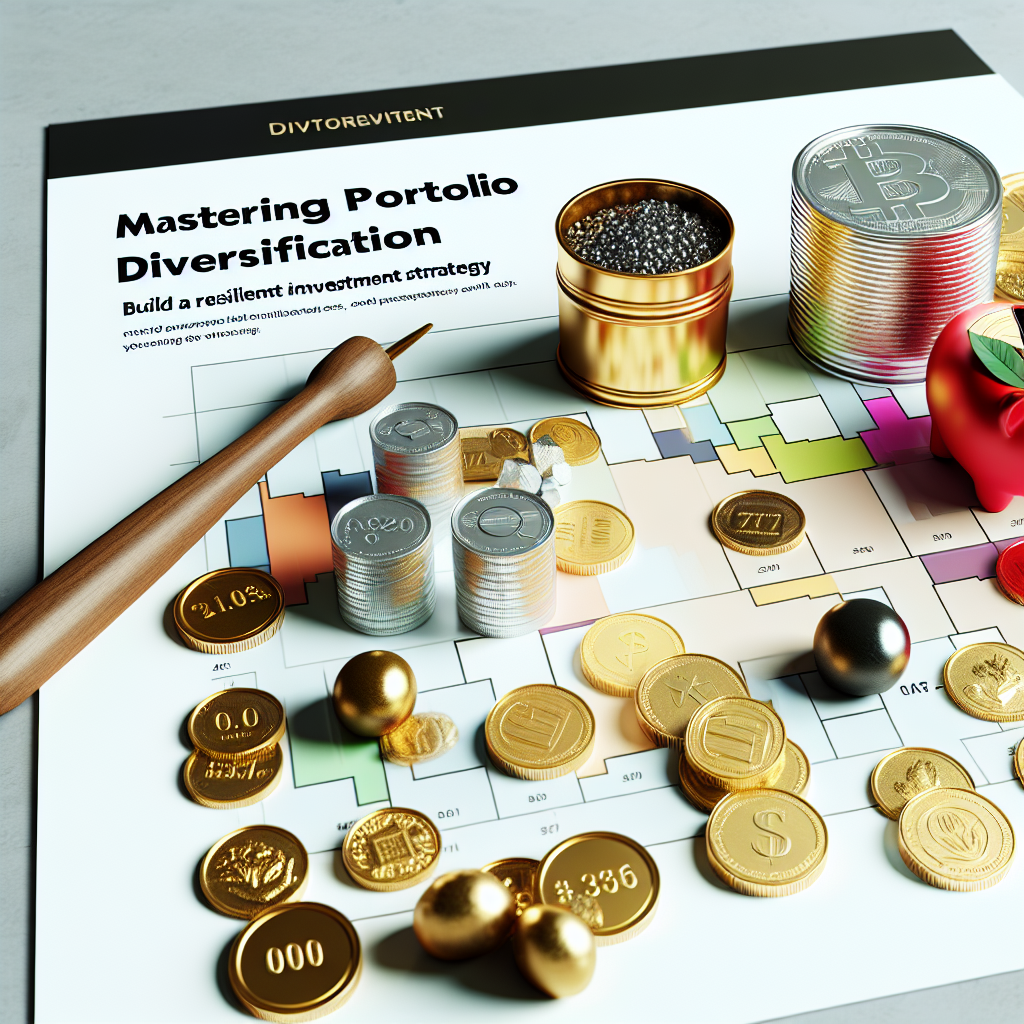
Portfolio diversification is a key investment strategy designed to minimize risk and boost returns by spreading investments across various classes, sectors, and regions. By avoiding reliance on a single investment or market segment, investors can cushion against poor performance in any single area.
Diversification acts as a safeguard, reducing volatility by blending assets with imperfect correlations. This approach can trim standard deviation by 3-5 percentage points against concentrated portfolios without necessarily sacrificing anticipated returns.
By spreading investments across diverse assets with different risk-return profiles, diversification increases the chances of capturing profitable opportunities. It allows investors to tap into growth trends across sectors, amplifying potential returns.
A diversified portfolio lays the groundwork for stable, reliable investments that can endure varying economic conditions, thereby supporting sustained growth over time.
Asset allocation involves distributing investments among different classes like equities, fixed income, and real assets to balance risk and reward, guided by an investor's goals and risk tolerance.
Understanding the correlation between assets is vital. Assets with low or negative correlations can reduce portfolio volatility, as they tend to respond differently to economic events and market changes.
Effective diversification means selecting a mix of assets that aligns with financial goals and risk tolerance, ensuring the portfolio is neither overly aggressive nor overly conservative.
Investing in a variety of domestic and international stocks across sectors provides exposure to diverse growth opportunities and risk profiles.
Including a range of bonds, both government and corporate with different maturities and credit qualities, can offer steady income and stability, balancing equity volatility.
Investments in real estate, via direct ownership or Real Estate Investment Trusts (REITs), can provide income and appreciation, often with low correlation to traditional stocks and bonds.
Investing in commodities like gold and oil can hedge against inflation and diversify portfolios since they often move independently from traditional financial markets.
Assets like private equity and hedge funds offer unique return profiles and further diversification, though they may carry higher risks and lower liquidity.
Spreading investments across industries such as technology, healthcare, and energy helps alleviate sector-specific risks and harness growth across various areas.
Including both domestic and international investments enables investors to tap into global growth and reduce exposure to country-specific risks.
Leveraging mutual funds and ETFs that track broad market indices can offer instant diversification across numerous securities, simplifying portfolio management.
Holding too many investments can lower returns and increase complexity without effectively reducing risk. It's crucial to strike a balance aligning with investment goals.
Ignoring market volatility can lead to portfolios that are either too conservative or too aggressive, hindering growth or increasing risk.
Not considering how assets interact can result in a less diversified portfolio than intended, leaving investors vulnerable to unforeseen risks.
Metrics like the Sharpe Ratio and Sortino Ratio help evaluate a portfolio's risk-adjusted performance and guide diversification decisions.
Frequent reviews and adjustments ensure the portfolio remains aligned with financial goals and risk tolerance, maintaining diversification effectiveness over time.
As personal circumstances and market conditions evolve, reassessing and modifying the portfolio ensures it continues to meet changing objectives.
Investors who diversified broadly across asset classes and regions have enjoyed more stable returns and limited losses during downturns.
Over-diversification can weaken returns and add complexity. Focusing on quality and strategic allocation rather than merely increasing holdings is key.
Robo-advisors utilize algorithms to create and manage diversified portfolios tailored to individual risk profiles and goals, offering an automated and cost-effective solution.
Advances in AI and machine learning enhance portfolio optimization, enabling more precise and dynamic diversification strategies.
Diversification is fundamental to effective investment strategy, offering risk mitigation, enhanced returns, and alignment with long-term financial goals. By grasping and applying diversification principles, investors can construct portfolios that are resilient and primed for sustained growth.
There's no set number, but a well-diversified portfolio usually includes a balanced mix of asset classes, sectors, and regions, optimizing risk and return.
Can diversification eliminate all investment risk?While diversification significantly reduces unsystematic risk, it can't eliminate systematic risk, which impacts the entire market. All investments carry some risk.
How frequently should a portfolio be rebalanced?Regular, at least annual, reviews are advised to keep the portfolio aligned with financial goals and risk tolerance, making necessary adjustments.